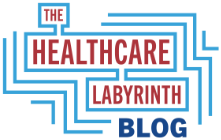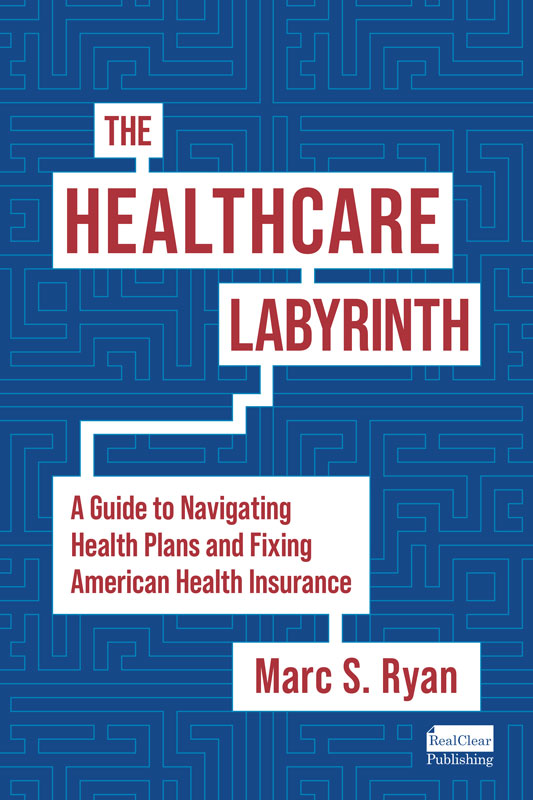This is one of a number of blogs that will appear on my daughter. I call her Kitty. She is a wonderfully talented, bright, and empathetic individual in her late ‘20s. She and I agreed I would write this series to impart how important health coverage is. Not only is her decision to have surgery courageous, but so is her decision to share her journey through me.
The principal reason to share the journey is because we both want to explain what many average Americans go through financially when they have major operations and do not have the best insurance or no insurance at all. My daughter is privileged to come from a well-off family and to have consistent and robust insurance. This will mean that she will pay a tiny amount for a surgery with a sticker price in the hundreds of thousands of dollars. But for uninsured and underinsured Americans, the costs of such a surgery could literally bankrupt them. In the alternative, they would forego important medications and the surgery altogether. My daughter has not had to do that, but millions of Americans do each year.
Throughout this series, we will give you updates on Kitty’s surgery and progress as well as share her health insurance journey, the bills she receives, the amount she pays, and calculate what someone who is uninsured and underinsured might pay. As well, since she has a connection to the United Kingdom, we will compare and contrast the U.K. and American healthcare systems.
The Background on Kitty and her condition
Kitty was diagnosed with a cavernous angioma or malformation in her senior year of high school. In this case, the malformation has blood vessel walls that are weak and thin in her brain. As such, blood can leak out or even explode into the surrounding brain tissue, causing temporary or permanent damage. In rare instances, such events can cause stroke or death.
On the positive side, she has but one in her brain and it is relatively superficial (it is not deep inside the brain and can be removed). Many who have multiple malformations have a lifetime of debilitation as they have so many, they are throughout the brain, and they cannot be operated on. On the downside, the malformation is near her language and motor skills areas, which means some risk. Making things more nerve-racking, she is a linguist.
The malformation was likely there since birth. As a child she had severe headaches and had her first brain episode in her senior year of high school. The week prior to the first event, we noticed some slurring in her speech but we thought nothing of it. But she arrived at my bedroom one morning with the inability to speak and one side of her face paralyzed. It was determined that her malformation erupted and luckily the impact was temporary. Because humor is always important, due to the slurring, since that episode we always refer to Kitty’s “breeding blain.”
Ten years ago, we had received split reviews from various neurosurgeons on what to do. Some said take it out now and get it over with; others said the risk of surgery outweighed the long-term risk at the time.
Unfortunately, my daughter has had a tough ten years. She has had a number of additional events in the last ten years, including extreme headache episodes (far worse than a bad migraine), partial temporary paralysis of her face and hands, and sometimes days of slurred speech.
Despite these challenges, she did get her undergraduate and graduate degrees in the United Kingdom — an undergraduate Master’s Degree with a double major in Arabic and Persian (she speaks some Turkish too) from the University of Edinburgh and a Graduate Master’s Degree in Russian, East European, and Eurasian Studies (she added Russian as yet another language) from the University of Glasgow. She spent time studying not only in the U.K., but in Egypt and Tajikistan at language institutes. We had to load her up with months and months of medications for all her overseas stays.
More recently, she has had recurring and escalating symptoms, both from the malformation itself and from seizure medication. She arrived at the fact that she now wants to have the operation to remove the malformation from her brain. Along with the symptoms, there are other career and life decisions that entered into her decision to have the surgery. She has to consider the potential risks of pregnancy in her future if she is on various medications. She also wants to give back to the world in several government agencies, non-profit organizations (NGOs) or the media. These jobs would take her to remote locations that may not have strong healthcare systems. The ability to get medication and the risk to her health would be major considerations. And the government generally will not take people with such conditions, but will if the malformation is no longer there.
Obviously, my wife and I are worried. It is a complex operation. It is set for February 22. We sought a second opinion as everyone should do in this case. The medical professionals agree that now is the time – there are symptoms, impacts to her life and career, and technology has advanced the past decade to reduce risks of surgery. We, too, are at peace with her decision. It is her life and she must live it the way she wants to. She wants the best opportunities and this will give it to her.
Healthcare lesson number 1: She very well could have been uninsured:
Here is the first lesson from her healthcare journey. My daughter could very well have been uninsured. How so? Well, she was on my employer coverage and later a retiree plan I had when she was up to age 26. This was a benefit from the Affordable Care Act (ACA) and should be celebrated. My retiree plan was very generous and actually allowed her to stay on until the end of the year she turned 26. Between her undergraduate and graduate degrees in the U.K., she worked at a temporary job in the United States that offered no health insurance. Thus, we had to turn to the Exchange for insurance for her. Another good thing from the ACA. Otherwise, many would have no insurance. Someone with her medical history would have been underwritten out of coverage. Back in the day, as a healthcare executive overseeing some underwriting, I actually did this and hated it.
When we applied, because of her earnings she qualified only for a small premium subsidy through the ACA. She was at the top of the income scale for subsidies. That meant her insurance bill was going to be about $300 a month for a Silver plan or $500 a month for a Platinum plan. Because insurance was so important for her healthcare, we chipped in to help her get the right insurance. When we ran the numbers, the total cost of healthcare for the Silver plan with all premiums and cost-sharing would have been as much or more than the Platinum plan. This is because she is on several expensive medications for her condition. The drug cost-sharing was astronomical in the Silver plan and only some drugs would have qualified for co-pay assistance programs. More important, what if something happened to my daughter medically? The Platinum plan would protect her by having a much lower deductible, lower hospital cost-sharing, and a reasonable maximum out-of-pocket costs threshold (after which the insurer pays for everything).
Here is the issue: we as a family could make such decisions. We knew how to run the numbers and could afford to buy a better policy and chip in as the subsidy was too low. But many out there do not have that luxury. The sad fact is many other 20-something-year-olds could not afford either the Silver or Platinum plan (with a subsidy) or the cost of the expensive medications’ cost-sharing. They often go without coverage and even without critical medications.
Of course, my daughter is special to me. But what makes my daughter more important than everyone else? Doesn’t everyone deserve good healthcare and access regardless of income? Why should insurance be treated as a commodity and mean some get care and others do not?
Healthcare lesson number 2: Florida made matters even worse:
After my daughter stopped working and was ready to go back to graduate school, her income dropped below 100% of poverty — actually zero in 2023 because she was again a student. While she was eligible as a student to access the Scottish National Health Service, at the time it did not cover some of her medications and accessing them took time. It took her over a year to get one critical medication. We had to maintain American coverage to ensure she had access to medications as well to be covered when she was back in the United States on holidays. Again, most families cannot afford that and their child would have been health insurance bare in America.
When Kitty’s income dropped to zero, she was no longer eligible even for the small subsidy she got through the ACA. Why? Because Florida is one of ten states in the U.S. who has not yet expanded Medicaid. That put her in what is a coverage gap — a “no-man’s land” for healthcare in America. Effectively, she was too rich for Medicaid (did not meet the eligibility and poverty requirements) and too poor for the Exchange subsidy program (her income was under 100% because she was a student again). That sent her Platinum plan for 2023 to about $700 per month with no subsidy and to $775 per month with no subsidy for 2024. We pay that because we can afford it, but anyone else in this situation would absolutely — no questions asked — be uninsured if over age 26 and a student with no income. For political reasons, selfish governors and state lawmakers in ten states, including my own, refuse to expand Medicaid and leave about 1.9 million in this coverage gap. This even though the federal government would pay 90% of the costs of the expansion populations. As we say in our household, “that ain’t right!”
Conclusion
In summary, my daughter is both courageous and lucky. She and I know this better than anyone. But we mourn for those who face healthcare crises and conditions each day and have no insurance or are underinsured. For us, this is a moral issue – people deserve affordable coverage. Every other developed country in the world makes this commitment. While people need to be personally responsible and be vested in their health, income should not be a determinant of how healthy you are in America.
We also believe that affordable universal access would be a great economic investment. We as a nation spend well more on healthcare as a percentage of gross domestic product (GDP) than any other developed nation and yet have an uninsured rate that is 8% to 10% compared with an average of 1% in the other nations. Imagine that.
#healthcare #healthcarereform #coverage #aca #exchanges #medicaid
— Marc S. Ryan





